Intracellular sorting and transcytosis of the rat transferrin receptor antibody OX26 across the blood-brain barrier in vitro is dependent on its binding affinity
- PMID: 29877588
- PMCID: PMC6175443
- DOI: 10.1111/jnc.14482
Intracellular sorting and transcytosis of the rat transferrin receptor antibody OX26 across the blood-brain barrier in vitro is dependent on its binding affinity
Abstract
The blood-brain barrier (BBB) is a formidable obstacle to the delivery of therapeutics to the brain. Antibodies that bind transferrin receptor (TfR), which is enriched in brain endothelial cells, have been shown to cross the BBB and are being developed as fusion proteins to deliver therapeutic cargos to brain targets. Various antibodies have been developed for this purpose and their in vivo evaluation demonstrated that either low affinity or monovalent receptor binding re-directs their transcellular trafficking away from lysosomal degradation and toward improved exocytosis on the abluminal side of the BBB. However, these studies have been performed with antibodies that recognize different TfR epitopes and have different binding characteristics, preventing inter-study comparisons. In this study, the efficiency of transcytosis in vitro and intracellular trafficking in endosomal compartments were evaluated in an in vitro BBB model for affinity variants (Kd from 5 to174 nM) of the rat TfR-binding antibody, OX26. Distribution in subcellular fractions of the rat brain endothelial cells was determined using both targeted quantitative proteomics-selected reaction monitoring and fluorescent imaging with markers of early- and late endosomes. The OX26 variants with affinities of 76 and 108 nM showed improved trancytosis (Papp values) across the in vitro BBB model compared with a 5 nM OX26. Although ~40% of the 5 nM OX26 and ~35% of TfR co-localized with late-endosome/lysosome compartment, 76 and 108 nM affinity variants showed lower amounts in lysosomes and a predominant co-localization with early endosome markers. The study links bivalent TfR antibody affinity to mechanisms of sorting and trafficking away from late endosomes and lysosomes, resulting in improvement in their transcytosis efficiency.
Open practices: Open Science: This manuscript was awarded with the Open Materials Badge. For more information see: https://cos.io/our-services/open-science-badges/ Cover Image for this issue: doi: 10.1111/jnc.14193.
Keywords: affinity optimization; blood-brain barrier; intracellular trafficking; quantitative targeted proteomics; transferrin receptor antibody.
© 2018 The Authors. Journal of Neurochemistry published by John Wiley & Sons Ltd on behalf of International Society for Neurochemistry.
Figures
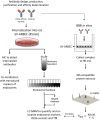
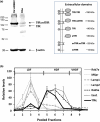

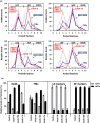
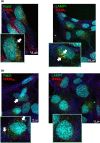
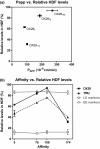

Similar articles
-
Endosomal trafficking regulates receptor-mediated transcytosis of antibodies across the blood brain barrier.J Cereb Blood Flow Metab. 2018 Apr;38(4):727-740. doi: 10.1177/0271678X17740031. Epub 2017 Nov 15. J Cereb Blood Flow Metab. 2018. PMID: 29140158 Free PMC article.
-
Enhanced Delivery of Galanin Conjugates to the Brain through Bioengineering of the Anti-Transferrin Receptor Antibody OX26.Mol Pharm. 2018 Apr 2;15(4):1420-1431. doi: 10.1021/acs.molpharmaceut.7b00937. Epub 2018 Mar 6. Mol Pharm. 2018. PMID: 29485883
-
Transcytosis of protein through the mammalian cerebral epithelium and endothelium. III. Receptor-mediated transcytosis through the blood-brain barrier of blood-borne transferrin and antibody against the transferrin receptor.Exp Neurol. 1996 Nov;142(1):47-65. doi: 10.1006/exnr.1996.0178. Exp Neurol. 1996. PMID: 8912898
-
Revisiting nanoparticle technology for blood-brain barrier transport: Unfolding at the endothelial gate improves the fate of transferrin receptor-targeted liposomes.J Control Release. 2016 Jan 28;222:32-46. doi: 10.1016/j.jconrel.2015.11.032. Epub 2015 Dec 3. J Control Release. 2016. PMID: 26658072 Review.
-
Blood-brain barrier drug delivery of IgG fusion proteins with a transferrin receptor monoclonal antibody.Expert Opin Drug Deliv. 2015 Feb;12(2):207-22. doi: 10.1517/17425247.2014.952627. Epub 2014 Aug 20. Expert Opin Drug Deliv. 2015. PMID: 25138991 Review.
Cited by
-
Peptides as Pharmacological Carriers to the Brain: Promises, Shortcomings and Challenges.Mol Pharm. 2022 Nov 7;19(11):3700-3729. doi: 10.1021/acs.molpharmaceut.2c00523. Epub 2022 Sep 29. Mol Pharm. 2022. PMID: 36174227 Free PMC article. Review.
-
Application of In vitro transcytosis models to brain targeted biologics.PLoS One. 2023 Aug 23;18(8):e0289970. doi: 10.1371/journal.pone.0289970. eCollection 2023. PLoS One. 2023. PMID: 37611031 Free PMC article.
-
Modelling a Human Blood-Brain Barrier Co-Culture Using an Ultrathin Silicon Nitride Membrane-Based Microfluidic Device.Int J Mol Sci. 2023 Mar 15;24(6):5624. doi: 10.3390/ijms24065624. Int J Mol Sci. 2023. PMID: 36982697 Free PMC article.
-
Understanding Drug Delivery to the Brain Using Liposome-Based Strategies: Studies that Provide Mechanistic Insights Are Essential.AAPS J. 2021 Oct 28;23(6):114. doi: 10.1208/s12248-021-00648-z. AAPS J. 2021. PMID: 34713363 Free PMC article. Review.
-
Harnessing the Potential of Exosomes in Therapeutic Interventions for Brain Disorders.Int J Mol Sci. 2025 Mar 11;26(6):2491. doi: 10.3390/ijms26062491. Int J Mol Sci. 2025. PMID: 40141135 Free PMC article. Review.
References
-
- Ahn J. and Johnstone R. M. (1993) Origin of a soluble truncated transferrin receptor. Blood 81, 2442–2451. - PubMed
-
- Artursson P. and Karlsson J. (1991) Correlation between oral drug absorption in humans and apparent drug permeability coefficients in human intestinal epithelial (Caco‐2) cells. Biochem. Biophys. Res. Commun. 175, 880–885. - PubMed
-
- Cabezon I., Manich G., Martin‐Venegas R., Camins A., Pelegri C. and Vilaplana J. (2015) Trafficking of gold nanoparticles coated with the 8D3 anti‐transferrin receptor antibody at the mouse blood‐brain barrier. Mol. Pharm. 12, 4137–4145. - PubMed
-
- Chan L. N. and Gerhardt E. M. (1992) Transferrin receptor gene is hyperexpressed and transcriptionally regulated in differentiating erythroid cells. J. Biol. Chem. 267, 8254–8259. - PubMed
MeSH terms
Substances
Grants and funding
LinkOut - more resources
Full Text Sources
Other Literature Sources

